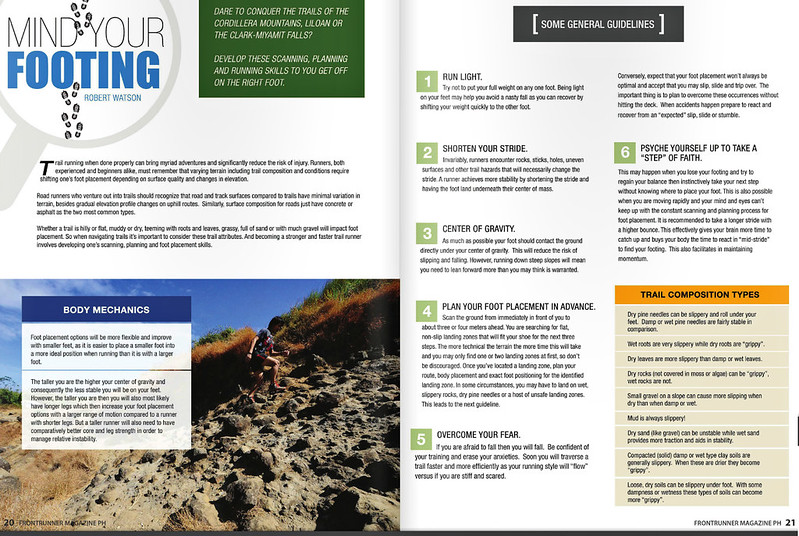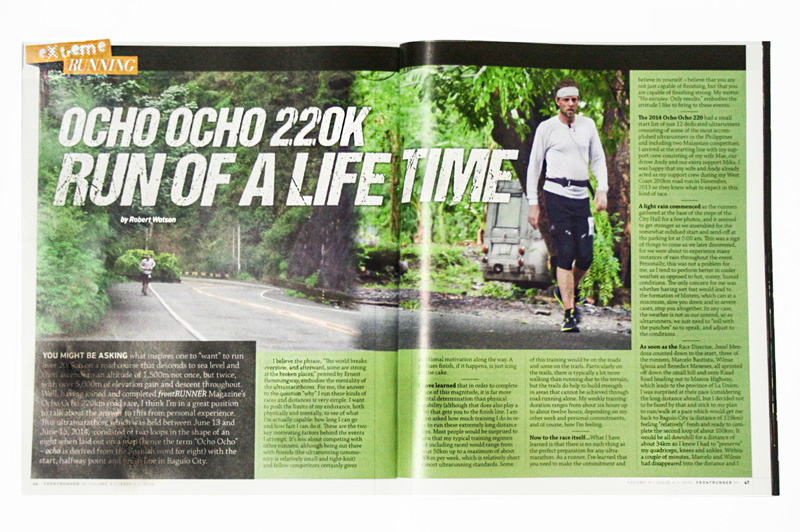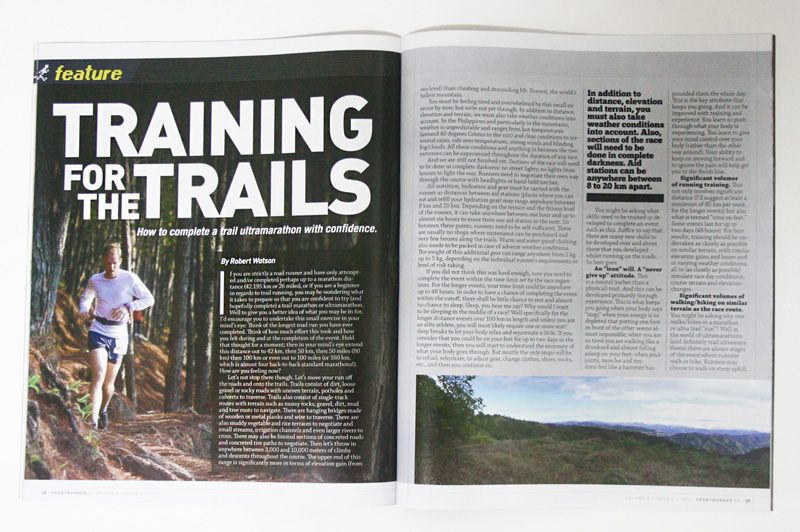
Media
If you are new to trail running or even if you’re already a trail veteran and you haven’t yet perfected your fueling and hydration strategy for training or racing on the trails then there are a few factors you must take into consideration when deciding on the most appropriate fueling and hydration strategy for your runs.
The first thing to recognize, as is the case with individual training plans, is that there is not a “one size fits all” fueling and hydration approach. Every runner has varying nutritional requirements, sweat rates and fat burning capabilities. A better understanding of your particular needs can be accomplished by testing and refining your hydration and fueling strategy during training. There are no short cuts.
Although a separate topic for discussion, if you have trained your body appropriately and consumed a diet that teaches your body to burn fat (i.e. less carbohydrates and more fats and protein) as your primary fuel source (rather than sugar as your primary food source) then the need for additional nutrients whilst undertaking long training runs or during race events will be greatly reduced. Even lean athletes have extensive fat reserves.
Now back to fueling your body during long trail runs and races. It has been fairly well documented that consuming a carbohydrate drink that provides about 30 to 60 grams of carbohydrates per hour during long training runs or competitive events can improve endurance. This equates to adding about one heaped teaspoon of honey (for example) to 180ml of water. This helps to maintain fat burning for energy, coordination and also helps prevent feelings that your effort whilst running is more difficult than it actually is.
With your carbohydrate drink there are two important considerations you should consider: the strength of the drink and the type of sugar contained in the drink. Strength refers to the concentration of sugar found in the drink. The strength has an impact on how your intestines handle the drink, which then subsequently impacts on your metabolism. If at all possible, it’s best to make carbohydrate drinks at home from basic natural food sources that don’t contain unhealthy ingredients. This also provides an opportunity for you to modify the sugar concentration, sodium or other components to suit your own unique body requirements.
It is best to use food sources made of simple sugars such as fruit juice or honey for example. Apple juice works well but carrying apple juice mixed with water during a hot trail run could lead to the juice going bad so the environmental conditions also need to be taken into account. As with all foods you should test those that work best with your unique body requirements. For example, some runners are not able to tolerate high amounts of fructose (which is contained in both honey and fruit juice) as it can cause lower intestinal discomfort. Another important point to note is that some sugars such as sucrose and malt for example require digestion that may also cause intestinal issues.
If you stick to the recommended concentration of 30 to 60 grams of carbohydrates per hour made of simple sugars (that your body can easily tolerate), this will not remain for too long in the stomach and will be processed at a similar rate to plain water. If the concentration of sugar in your drink is too high however, it may remain in the stomach for longer and therefore absorption will be delayed. A final point to note is that while carbohydrate drinks are high in water content, they should be consumed in addition to, rather than in place of, water and sodium.
Some runners also like to include sodium in their carbohydrate drink. For most runners this would be around 500mg of sodium per 250ml to 500ml of fluid (this could be in the form of salt). Depending on your unique sweat rate and environmental conditions you should ideally consume between 250ml and 500ml of your carbohydrate solution every 15 minutes.
However, irrespective of your fluid intake, many running events or training sessions result in dehydration despite fluid intake as it is almost impossible to balance water loss and intake. The more water you can drink in smaller amounts throughout a training session or race, the less dehydrated you will become by the finish. In long events or training sessions water should be consumed in addition to your carbohydrate drink.
In longer efforts, many runners find that the addition of protein during training and racing is also very helpful. Personally I use Organic Vanilla Hemp Rice Protein. This is also high in L-glutamine which also improves water and electrolyte absorption. You can mix about 10 to 15 grams of protein into your carbohydrate drink.
Many athletes prefer solid food to obtain some of their carbohydrate and protein needs. I prefer to carry pitted dates, raisins and dried apricots for energy. On their own they are a little difficult to chew and swallow on the go, but with a quick squirt of water from your water bottle they go down like a treat. I also carry raw cashews (probably the easiest nuts to chew and digest on the run) and also with a healthy mix of protein, carbohydrates and healthy fat.
A small amount of fat can also be helpful during competition and help in recovery after competition. A small amount of coconut oil, for example, cannot only make some solutions or foods more palatable but can also contribute to energy needs.
Finally, and importantly, the foods you bring onto the trail should be high energy, light and easily digestible.
Reference: The Big Book of Endurance Racing and Training – Dr. Philip Maffetone.
“An “iron” will. A “never give up” attitude.”
This is a mental (rather than a physical) trait. And this can be developed primarily through experience. This is what keeps you going when your body says “stop;” when your energy is so depleted that putting one foot in front of the other seems almost impossible; when you are so tired you are walking like a drunkard and almost falling asleep on your feet; when your joints, muscles and tendons feel like a hammer has pounded them the whole day. This is the key attribute that keeps you going. And it can be improved with training and experience. You learn to push through what your body is experiencing. You learn to give your mind control over your body (rather than the other way around). Your ability to keep on moving forward and to ignore the pain will help get you to the finish line.
“Significant volumes of running training.”
This not only involves significant distance (I’d suggest at least a minimum of 80 km per week for the longer events) but also what is termed “time on feet.” Some events last for up to two days (48 hours). For best results, training should be undertaken as closely as possible on similar terrain, with similar elevation gains and losses and in varying weather conditions all to (as closely as possible) simulate race day conditions, course terrain and elevation changes.
You might be asking why one walks/hikes in a marathon or ultra trail “run”? Well in the world of ultramarathons (and definitely trail ultramarathons) there are always stages of the event where runners walk or hike. Runners may choose to walk on steep uphill and downhill sections, extremely technical terrain, or just so they can regain some strength from the exertion already undertaken in preparation for what is still to come. Once again, “time on feet” is an important criterion here.
can also not be overlooked as this will impact on training quality as well as the race day condition of the runner. Nutritional requirements for runners will vary depending on age, gender, current physical condition, training type and volume. But suffice to say that large quantities of vegetables and fruits, quality sources of protein, healthy fats, unprocessed forms of carbohydrates and lots of water should form the basis of a solid nutritional plan for training and event preparation.
“Your training should mimic as closely as possible the race you are preparing for.”]If there is significant elevation gain and descent on the course then you need to incorporate many more uphills and downhills into your training. If there are lots of technical, single-track trails to negotiate then you need to develop your footwork in order that you are comfortable in negotiating this terrain come race day. If the weather is likely to be hot then train in the heat. If the course is at elevation, try to train at or above that elevation at least in the last few weeks prior to the event. If you just train on the roads then this is not going to be the ideal training ground to get you to the finish line on race day. Road running uses a more limited set of muscle groups than running on the trails, so you may find yourself lacking in vital areas come race day and particularly as the you enter the later sections of the course. Also, with road running you can enter the “zone” and not have to think so much about foot placement, etc. On the trails, if you enter the “zone” as we say, you may wake up and find yourself tumbling down the side of a cliff! So it’s imperative to have 100% focus all of the time to prevent possible injury whilst on the trails.
The final suggestion is to test the gear, shoes, equipment, hydration, nutrition and the weight to be carried, etc. that you plan to use during the event.”]Test this during your longer runs/hikes whilst training as this will give you the ability to make changes before the event rather than having to deal with problems during race day itself.
You might be wondering what gives me, the author, the knowledge to be able to “authoritatively” recommend the above approach to preparing for a trail marathon/ultramarathon event. Well in my opinion, failure is the best way to prepare for success. And success is then validation of the changes you implement to overcome failure. I can tell you that as an ultrarunner, I have had my fair share of failure but also some successes as well:
Did not Finish (DNF)
- Completed 70 km 2012 The North Face 100 Baguio/Benguet, Philippines Did not Finish (DNF)
- Completed 53 km 2013 The North Face 100 Baguio-Benguet, Philippines Did not Finish (DNF)
- Completed 71 km 2014 Hardcore 100 Miles Trail Ultra Marathon (H1), Kayapa, Nueva Vizcaya, Philippines Did not Finish (DNF)
- Completed 102 km
Successes
- 55th out of 112 finishers (9:06:40)
- 1st Valley Trail Challenge
57km Ultra Marathon
Nuvali, Sta. Rosa, Laguna
June 18, 2011
8th” out of 115 finishers
(6:29:24) - Clark-Miyamit Falls Trail Marathon
42km
Clark, Pampanga
September 22, 2013
2nd out of 50 finishers
(7:15:59) - 4th Mt. Pinatubo
50km Ultra Trail Challenge
Tarlac
October 13, 2013
40th out of 41 finishers
(47: 38:29) - 1st West Coast Road Ultra Marathon Race
200km
Subic to Alaminos
November 1-3, 2013
17th out of 95 finishers
(14:42:48) - Clark-Miyamit Falls Trail Ultra Marathon
50 miles
Clark, Pampanga
November 24, 2013
45th out of 253 finishers
(14:09:38) - Bataan Death March 102K
Road Ultra Marathon
Mariveles, Bataan to San Fernando, Pampanga
March 1-2, 2014
6th out of 71 finishers
(5:35:40) - 3rd Ugo Trail Marathon
42km
Kayapa, Nueva Vizcaya
March 30, 2014
5th out of 22 finishers
(6:12:00) - Baguio to Aringay 62km
Road Ultra Marathon
La Union
April 20, 2014
11th (1:16:00) - Run for the Trails
12km
Baguio City
April 27, 2014



